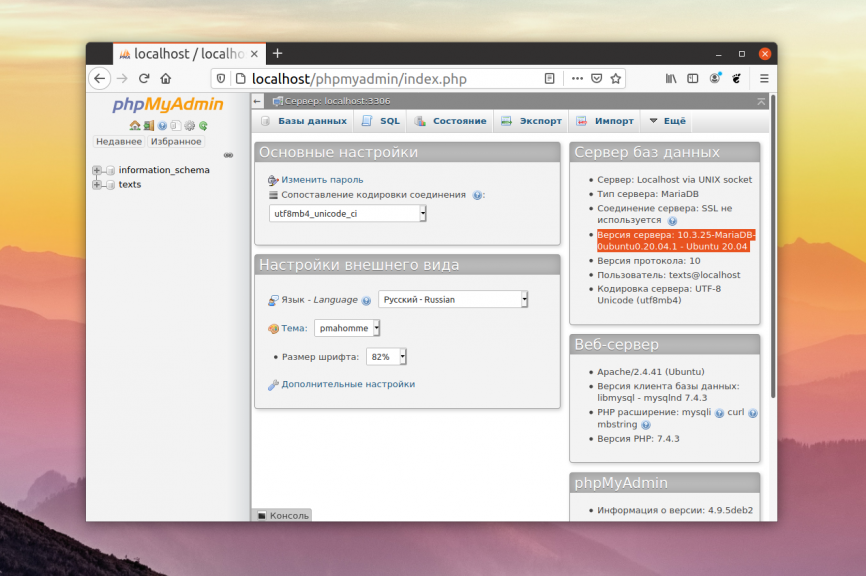-
United Kingdom+44 (20) 4577-20-00
-
USA+1 (929) 431-18-18
-
Israel+972 (55) 507-70-81
-
Brazil+55 (61) 3772-18-88
-
Canada+1 (416) 850-13-33
-
Czech Republic+420 (736) 353-668
-
Estonia+372 (53) 683-380
-
Greece+30 (800) 000-02-04
-
Ireland+353 (1) 699-43-88
-
Iceland+354 (53) 952-99
-
Lithuania+370 (700) 660-08
-
Netherlands+31 (970) 1027-77-87
-
Portugal+351 (800) 180-09-04
-
Romania+40 (376) 300-641
-
Sweden+46 (79) 008-11-99
-
Slovakia+421 (2) 333-004-23
-
Switzerland+41 (22) 508-77-76
-
Moldova+373 (699) 33-1-22
 English
English
Find out the MySQL version
- Main
- Knowledge base
- Find out the MySQL version
There are at least three types of MySQL. These are the original one from Oracle, MariaDB from the developer of the original one, which appeared after it became owned by Oracle, and PerconaDB, a fork with its own storage engine. Each kind has several actual versions, which may come by default depending on your distribution. Next, let's look at how to find out the version. The version determines the supported features as well as some limitations.
How to determine the version of MYSQL
The best way to find out the version if you have access to the server is to run the mysqld command with the --version option:
$ mysqld --version
In this case, MariaDB 10.3 is installed. If you have a username and password to access the database, you can connect to it using the console client. It too outputs the server version when you connect. For example:
$ mysql -u user_name -h хост -pOr:
$ sudo mysql -u rootYou may have connected to the server and want to see the version, use a command like this:
$ mysql> SELECT VERSION();You can see the value of the version variable:
mysql> SHOW VARIABLES LIKE '%version%';
If you don't have access to the database server and can't connect to it using a terminal, you can still view the version using PhpMyAdmin. It is necessary to have authorization data. Just authorize in the program and on the main page, in the Database Server section you will see the necessary information.

To find out the version is simple This task can be solved in many ways, and it displays not only the version but also the name of the variety of the database. For example, MariaDB or Percona.






































